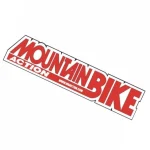INTERNAL ROUTING THE EASY WAY – CHEAT CODES FOR CABLE AND HOSE ROUTING
Take the pain out of tricky internal frame routing with these three techniques

INTERNAL ROUTING THE EASY WAY
Internal cable and hose routing is great until you have to work on it. The clean, sleek lines are all but forgotten after a wrestling session trying to guide a small tube out of a small, dark hole. It doesn’t have to be this way. We have picked up a few tricks over the years that make servicing any bike with internal routing far easier and almost a joy to work on—almost.

NECESSARY TOOLS:
Pick or sharpened spoke
Threaded barb
Park Tool IR-1.3
Headlamp
Old piece of 4mm derailleur housing
REPLACING AN EXISTING LINE
If you are just replacing an already existing and routed cable or brake hose in a frame, the hard work has already been done for you. Follow these steps for replacement.
For this procedure, you will need a barbed connector (we like RockShox’s Stealth Barbed connector) and a long piece of old shift housing.











STARTING FROM SCRATCH
If you’re starting with a bare frame without any sort of plastic tubing or guides going through the ports, you’ll have to route the cables and hoses yourself. It’s typically best to route your lines with as little installed on the frame as possible to make it easier to orient the frame and use any available openings to help guide things. Here are two of our favorite techniques and tools:
OPTION 1: USING A PARK TOOL IR-1.3










OPTION 2: USING A PICK AND HEADLAMP









